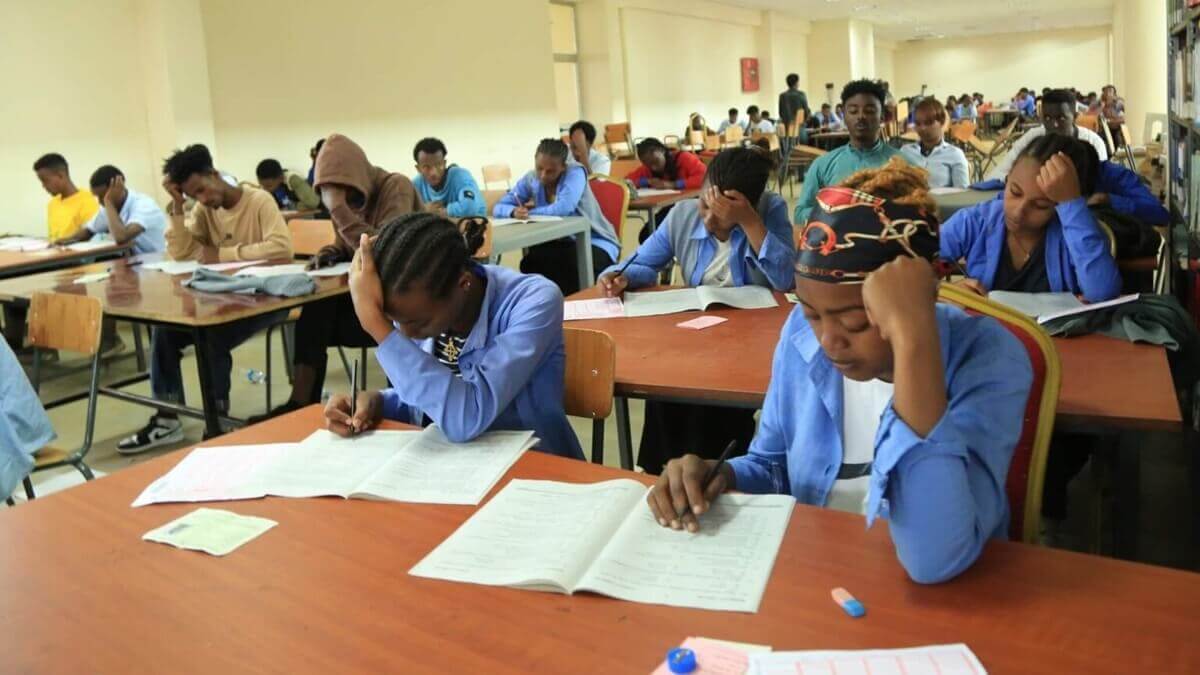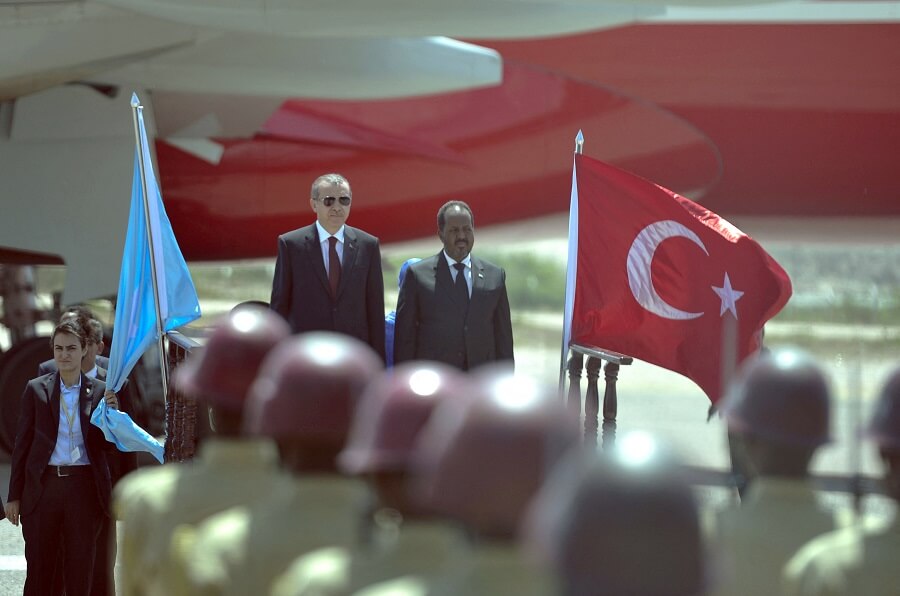Coffee Megaproject- Unleashing the power of Ethiopia’s genes and beans for a flourishing industry
By Teshome Hunduma (PhD) @TeshomeHunduma
A potential transformative coffee megaproject can amplify Ethiopian coffee’s rich history and untapped potential, leveraging its remarkable genetic diversity for global impact while reaping significant national benefits.
Addis Abeba – For centuries, testimonials from coffee aficionados to renowned retailers, diligent journalists, and insightful scientists have firmly established the complexity of genetic diversity, cherished values, and unparalleled qualities that epitomize Ethiopian coffee. Notably, esteemed publications such as the prestigious Journal of the British Board of Trade and the U.S. Commerce Department have recognized and celebrated the peerless excellence that defined Ethiopian coffee as far back as 100 years ago. Remarkably, their tributes have been bestowed upon the coffee beans originating from the eastern region of Harar, acknowledged as “held in the highest esteem by discerning connoisseurs for its unmatched fragrance and invigorating potency,” elevating it to the esteemed status of a treasured gift Ethiopia has bestowed upon the world.
In the fascinating book “Eating to Extinction: The World’s Rarest Foods and Why We Need to Save Them” penned by the brilliant Dan Saladino, a chapter of profound significance is devoted solely to the intriguing domain of “Wild Forest Coffee.” Saladino takes us on a breathtaking expedition, delving deep into the intricate fabric of coffee’s origins, tracing its remarkable journey from the ancient lands of Ethiopia to Yemen during the 6th century. James Bruce, an intrepid British adventurer, played a pivotal role in reshaping the narrative surrounding coffee’s origins in the 19th century.
He rectified the renowned Swedish Carl Linnaeus’s erroneous label of coffee as the “tree of Arabia,” which led to its scientific name, Coffee arabica. Bruce immersed himself in Ethiopia’s coffee regions, where he made remarkable observations. He discovered that the locals consumed roasted coffee beans for their stimulating properties and that the hot beverage form of coffee was not widely known at that time. Bruce also witnessed the practice of chewing roasted coffee beans, which provided people, especially the Oromos and Sidamas, with strength and uplifted spirits during tough days, surpassing the nourishment of bread or meat. He concluded that coffee had been brought from the southwestern part of Ethiopia to be cultivated in the northern regions where he encountered it growing. Thanks to Bruce’s tireless efforts, Ethiopia rightfully reclaimed its position as the true birthplace of coffee.
Saladino and other voices shed light upon two distinct paths that paved the way for the global dissemination of coffee after it arrived in Yemen between the 15th and 18th centuries, coupled with subsequent reductions in its genetic diversity. The first path illuminates the remarkable journey undertaken by the Dutch during the colonial era, transporting coffee from Yemen to the Java Islands in Indonesia, where the first commercially grown coffee in a European colony was harvested in 1719. From there, it continued its undeterred voyage, finding cold comfort within the green embrace of the Amsterdam botanical garden in the Netherlands before making its way to the beautiful Paris Greenhouse in France.
“…it is disheartening to witness Ethiopia, the birthplace of coffee, projected to generate a significantly lower revenue of just US$0.64 billion in the coffee segment…”
Ultimately, this greenhouse-bred coffee in Paris crossed the expanse of the Caribbean Islands, leaving a lasting mark before establishing a considerable presence in the fertile soils of Brazil. The second trajectory unveils the anxious endeavors of French traders, who transported coffee beans from Yemen to East Africa (Kenya and Tanzania), west Africa, and eventually Brazil. This intriguing historical account illuminates how coffee became the most consumed beverage and one of the most traded agricultural commodities worldwide.
Additionally, regardless of whether trajectory one or two is correct, it is important to highlight that only a small number of coffee plants were originally transported around the world. These few plants formed the genetic foundation upon which coffee production is built, consequently rendering it susceptible to climate change’s impacts. These narratives about the coffee journey from Ethiopia to the rest of the world are the tip of the iceberg in the fascinating description that authoritative sources like Saladino’s chapter on wild coffee forests in Ethiopia and Jonathan Morris’s book on the Global History of Coffee work can uncover.
Coffee left a lasting mark on the Enlightenment Age in Europe, influencing philosophical, political, and scientific progress from the late 17th to the early 19th century. Its impact persists, shaping science and innovative thinking in the 21st century. Probably this article wouldn’t have been written without the energizing cups of coffee, and you, my dear reader, wouldn’t have been engaged without your own stimulating brew. In economic terms, a reputable market and consumer data provider headquartered in Hamburg, Germany, Statista, projects that the global revenue in the coffee segment will soar to US$495.50 billion in 2023.
However, it is disheartening to witness Ethiopia, the birthplace of coffee, projected to generate a significantly lower revenue of just US$0.64 billion in the coffee segment for the same year, in stark contrast to Vietnam’s US$6.51 billion, Brazil’s US$41.28 billion, and United States’ staggering income of US$95.58 million. Moreover, Ethiopia’s coffee market is expected to experience a mere 1% annual growth rate. These circumstances raise important questions, urging the Ethiopian government to explore alternatives to exporting raw coffee beans and instead consider taking ownership of the entire value chain, leveraging its rich coffee genetic diversity to address global coffee challenges while reaping the benefits for itself and other nations.
“Ethiopia can play a vital role in tackling the global challenges faced by the coffee industry while upholding the enduring value it holds in the world of coffee”
Through the narrative of coffee’s journey between the 15th and 18th centuries, we gain insight into the dissemination of similar coffee plants to various countries. However, this also highlights the narrow genetic diversity of global coffee, rendering it vulnerable to mounting challenges such as the rise of pests, diseases, escalating temperatures, and unpredictable rainfall patterns. Coffee production is already grappling with severe outbreaks and the rapid spread of diseases like leaf rust, coffee berry disease, wilt, leaf blight, and infestations from pests like the coffee berry borer, leaf miners, and scales. For example, a recent study conducted in Guatemala has revealed alarming statistics. It indicates that smallholder farmer households experienced an average loss of 71% in coffee production, contributing to nearly doubling household migration rates.
The Coffee crisis in Central America is saddening, as smallholder families are forced to abandon their livelihoods and migrate northward to the United States. This exodus, driven by desperation and the pursuit of a better future, adds to the more significant flow of migrants seeking refuge and opportunities. As we look to the future, the coffee production industry is poised to confront even greater challenges, particularly in the face of an increasingly harsh climate. These changing environmental conditions not only pose a threat to crop yields but also contribute to the loss of crucial bee pollinators, further exacerbating the difficulties faced by coffee farmers.
Undoubtedly, Ethiopia holds a special place as the birthplace of the cherished “Black Gold” and the guardian of its remarkable genetic diversity, encompassing diverse varieties cultivated by farmers for over 1500 years, as well as the untamed coffee thriving within its remanent forests. In this capacity, Ethiopia can play a vital role in tackling the global challenges faced by the coffee industry while upholding the enduring value it holds in the world of coffee.
It is noteworthy that the Food and Agriculture Organization of the United Nations (FAO) took the lead in the mid-1960s by organizing international coffee-collecting missions to Ethiopia. These missions gathered invaluable coffee germplasm from various regions of Ethiopia, which was subsequently distributed to research institutes and agricultural centers worldwide for conservation, breeding, and the promotion of sustainable coffee production. In Ethiopia, the field gene banks in the eastern and western mountain regions preserve a portion of these collections. As of 2022, I learned that the Ethiopian Biodiversity Institute has conserved a total of 5,644 accessions in these field gene banks. However, it is important to highlight that these accessions only represent a fraction of the vast genetic diversity in the diverse coffee populations, cultivated and wild, found throughout Ethiopia.
“One might question the appearance of a mega coffee project and its implementation. However, it is evident that the current government has drawn valuable insights from ongoing mega projects.”
The coffee industry globally faces challenges, which presents a unique opportunity for Ethiopia to boost its economy. It is puzzling why the Ethiopian government settles for modest revenue from coffee. I understand that the international acclaim of Ethiopian coffee may make some citizens complacent. However, this should not hinder the government from making comprehensive investments to unlock the full potential of the coffee industry. We are witnessing new leadership driving transformative initiatives such as beautifying the capital, finalizing Africa’s largest dam—the Grand Ethiopian Renaissance Dam, constructing state-of-the-art resorts, implementing cluster-based wheat mechanization, and spearheading the national Green Legacy tree planting project. These developments beg the question: Does the leadership recognize the opportunity to elevate coffee to a megaproject and meaningfully contribute to Ethiopia’s ambitious development agenda? I believe they should.
For a successful coffee megaproject, taking a holistic approach and considering the entire value chain, including conservation, breeding, production, and supply of quality planting materials to farmers, and capacity building for production, processing, branding, and marketing, is crucial. While implementing such a mega-scale project may pose challenges for a resource-limited country, it’s important to recognize that coffee has allies in producing and processing companies and governments that are technologically well-equipped and eager to collaborate. Therefore, multistakeholder and multilevel collaboration is essential.
It is important to acknowledge that collaborating with powerful players in the coffee industry is not easy, and simply restricting access to coffee genetic resources is not a viable solution. The story of the coffee war over intellectual property between Ethiopia and Starbucks is a recent memory. Historical examples demonstrate the value of resistance against colonization. When the Italian Fascist regime invaded Ethiopia, the resistance movement not only fought for Ethiopian liberation but also safeguarded coffee from the Colonial Agriculture Ministry’s attempt to impose a monocultural production model.
“The initial step towards the coffee megaproject could involve organizing and building a team, with a national organization leading the effort”
This model aimed to standardize tree types and clear forests and increase yields, disregarding traditional coffee farming practices that maintained forests as reservoirs of genetic diversity and natural barriers against diseases like la roya (coffee blight). During the brief and precarious Italian occupation, Italian farming villages and coffee concession contracts granted to Europeans had already established 32,000 hectares of coffee monoculture. However, coffee diversity was preserved thanks to the Ethiopian Patriots’ Resistance Movement, defying the occupiers’ agriculture homogenization policies. This diversity continues to thrive today, sustained by 4.2 million smallholder farmers who account for over 93% of Ethiopia’s coffee production.
One might question the appearance of a mega coffee project and its implementation. However, it is evident that the current government has drawn valuable insights from ongoing mega projects. Unlike the agricultural sector reforms in Ethiopia, which often involve superficial changes like organizational renaming and department reshuffling, the current mega projects demonstrate substantial differences in terms of project execution. Therefore, a mega coffee project can leverage the recent experience gained in designing, planning, and executing these large-scale initiatives. Nevertheless, such projects must appreciate the traditional Ethiopian coffee farming style deeply. This encompasses the essence of family garden coffee, shade-grown practices, and a bird-friendly environment where white-cheeked turacos and large silvery-cheeked hornbills coexist symbiotically with the coffee trees, providing shelter and aiding in seed dispersal in the farms and forest.
Additionally, the project should build upon indigenous sun drying methods, which unlock tropical aromas and wild berry flavors while maintaining the coffee’s body density and creamy mouthfeel. It is necessary not to mimic industrial plantations solely to maximize yield and income but to uphold the distinctive Ethiopian coffee signature in different regions of the country. When necessary, plantations can be included as part of the project in areas and manners that minimize negative impacts on coffee forests and the cultural landscape.
The initial step towards the coffee megaproject could involve organizing and building a team, with a national organization leading the effort. This organization would design a project in Ethiopia’s eastern and western mountain eco-regions, integrating a model coffee village for cultural promotion and tourism. Alongside this, a regional coffee hub could be established to plan and coordinate activities such as conservation, variety improvement, quality seedling production and supply to smallholder producers, clustered production based on varieties, processing, branding, stocking, and transportation for marketing.
The story of Tadesse Meskela and his impactful work, showcased in the movie “Black Gold,” and other national experiences can significantly contribute to the success of a coffee hub in the downstream value chain, encompassing coffee production and marketing. Without connecting them to coffee breeding programs, the Ethiopian Biodiversity Institute has conserved coffee diversity in field genebanks, such as Choche, Yayu, and Bedessa, for the past four decades. These genebanks serve primarily as inactive museums rather than actively utilizing the conserved diversity for coffee variety improvement. It is necessary to reform these resource-wasting conservation practices based on a cereal crop conservation model and instead integrate them under regional coffee hubs. This would enable the link between diversity conserved in field genebanks and its sustainable use.
Furthermore, the national organization leading the megaproject should establish regional and international collaborations with specialized institutions across the coffee value chain stages. These collaborations would encompass the conservation of the dwindling diversity, genetic improvement of Ethiopian coffee varieties, efficient quality seed and seedling production, value addition, branding, and marketing.
By inviting these institutions to collaborate, Ethiopia can maximize the benefits derived from its coffee by focusing on value addition rather than solely exporting green beans. To effectively negotiate and leverage the value of Ethiopia’s coffee genetic diversity, it is crucial to building a team of experts well-versed in regional and global legal frameworks related to conservation, transfer of genetic material, ownership of varieties, and coffee-derived products. This expertise would enable Ethiopia to engage with technology holders and optimize the value of its coffee genetic resources. AS
________________________//_______________________________________________________//_______________________________
Editor’s Note: Teshome Hunduma Mulesa is a postdoctoral fellow at the Faculty of Landscape and Society of the International Environment and Development Studies, Noragric
Contact for media and press:https://www.nmbu.no/ans/teshome.mulesa







